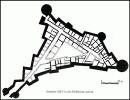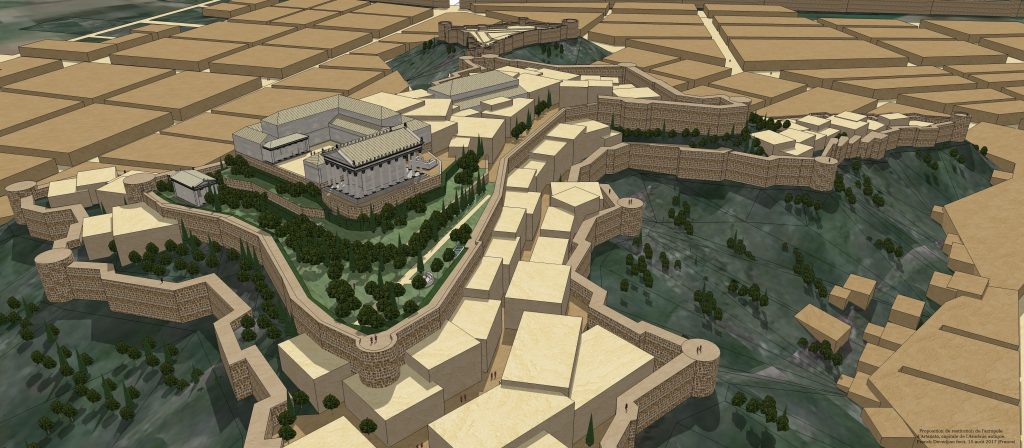Artashat – Capital of Armenia
Artashat (Artaxiasata), a pivotal city in Armenian history, was founded in 166 B.C. by Artashes I (Artaxias), the founder of the Artaxiad dynasty. Located strategically at the confluence of the Yeraskh (Araks) and Metsamor rivers, the site was chosen for its advantageous position for trade and defense. According to ancient sources, including Moses of Chorene (Movses Khorenatsi), the layout and development of Artashat were guided by none other than the famed Carthaginian military commander Hannibal, who sought refuge in Armenia after his exile. The Romans later referred to Artashat as the “Armenian Carthage” in recognition of its grand design and cultural significance.

The Urban Design and Cultural Flourish

Artashes I meticulously planned the city across nine hills, incorporating temples dedicated to Armenian deities, public structures, and fortifications that symbolized the city’s prominence. The city was also notable for being home to Armenia’s first theater, which became a hub for cultural expression and artistic development.

Artashat rapidly became a thriving commercial and cultural center of Armenia. Its population swelled to approximately 100,000 within a few decades, making it one of the largest cities in the region at the time. Artashes I even ordered the relocation of residents from the former capital, Yervandashat, to Artashat, cementing its role as the new administrative and political heart of Armenia.

Artashat’s Role in the Reign of Tigran the Great
During the reign of Tigran the Great (Tigranes II), Armenia’s capital was transferred to the newly constructed city of Tigranakert as part of his vision to create a pan-regional empire. However, following Tigran’s death, the capital returned to Artashat, regaining its status as Armenia’s political and cultural epicenter.
Roman Conquest and Restoration
In 58 B.C., Roman forces led by the general Corbulo captured and looted Artashat. When questioned by Roman senators about his actions, Corbulo reportedly stated that he lacked sufficient forces to defend the city and opted to abandon it. Despite this setback, Artashat was not permanently destroyed. Roman Emperor Nero later provided funds and engineers to King Trdat I (Tiridates I) to rebuild the city, further signifying its importance in the ancient world.
Decline in Importance
Artashat began to lose its prominence as a political and cultural center in the early medieval period. Despite its decline, the city remains an enduring symbol of Armenian statehood and cultural heritage. Its legacy as the “Armenian Carthage” continues to be celebrated, and its historical significance is preserved in Armenian literature and archaeological research.
Archaeological Legacy
The ruins of Artashat offer a glimpse into the architectural and cultural achievements of ancient Armenia. Excavations have uncovered remnants of temples, fortifications, and public buildings that attest to its grandeur. Latin inscriptions and historical accounts continue to shed light on its role as a crossroads of civilizations, bridging Armenia with the Roman and Hellenistic worlds.
Artashat remains a testament to the ingenuity and resilience of the Armenian people, standing as one of the most historically significant cities in the ancient Near East.




